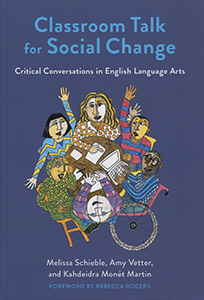Page Content

Unpacking terms and moving conversations forward
A LASCIVIOUS CARTOON SKUNK, the author of a series of books about a boy wizard, statues of Canada’s first prime minister — these are but three of the many recent targets of online “cancellation” campaigns. Calls to “cancel” someone or something have crept from Twitter into our communities and our schools. As a result, you might be finding the phrase “cancel culture” coming up around your dinner table or in your classrooms with increasing frequency. In any conversation about cancelling or cancel culture, it’s a safe bet that those involved have very different understandings of these terms.
Cancelling defined
Cancelling has its roots in African American vernacular English. It first appeared in pop culture in the 1981 disco song “Your Love is Cancelled” by Chic, and then appeared sporadically in movies, rap and hip hop over the next 20 years. The current emergence stems from a 2014 reality show and was a public declaration that something (typically a relationship) was over. In today’s online landscape, cancelling has become intertwined with the mass calling out of public figures for discriminatory words and actions, often with the apparent hope that they will be fired, deplatformed, depopularized or otherwise punished.
What is cancel culture?
Cancel culture is not an objective term that describes the current online cancelling phenomenon. More often than not, it’s an exclamation of false outrage that privileged individuals use to attempt to diminish public calls for accountability raised by minoritized voices.
Cancel culture is a catch-all lament used to frame decisions (from Dr. Seuss’s estate discontinuing books that contain racist caricatures to renaming schools, bridges and neighbourhoods originally named after the architects of the residential school system) as slippery slopes that will result in the erasure of the prevailing culture or history.

Strategies to use with your students
When your students start throwing out the terms cancel, cancelling or cancel culture, reframe the conversation using a simple reflective approach focused on three questions — What? So what? Now what?:
WHAT?
(The facts)
What happened?
Who’s involved?
What did they do?
What’s the specific
incident that led to
the call for cancellation?
SO WHAT?
(The opinions)
Why are people upset? What do they think or feel about the issue?
What do your students believe?
NOW WHAT?
(Possible actions)
What should be done? What are the logical consequences for those involved?
What could happen?
What should happen? What, if anything, should your students do themselves to take action?
TAKE NOTE
Black History Month (February)
In 1995, the Honourable Jean Augustine — a former elementary teacher and the first Black Canadian woman elected to the House of Commons — introduced a motion to recognize Black History Month across the country. The motion carried unanimously and February became recognized as Black History Month in Canada.
Holi Festival of Colours (March)
A Hindu festival with origins in South Asia, Holi celebrates the beginning of spring and signifies the triumph of good over evil. Holi is also widely known as the Festival of Colours, as Holi festivities often include throwing coloured powder and water.
Check out the ATA Library’s LibGuides for more information and resources!
RECOMMENDED RESOURCE

Classroom Talk For Social Change: Critical Conversations in English Language Arts
Melissa Schieble, Amy Vetter and Kahdeidra Monét Martin
Available through the ATA library.
